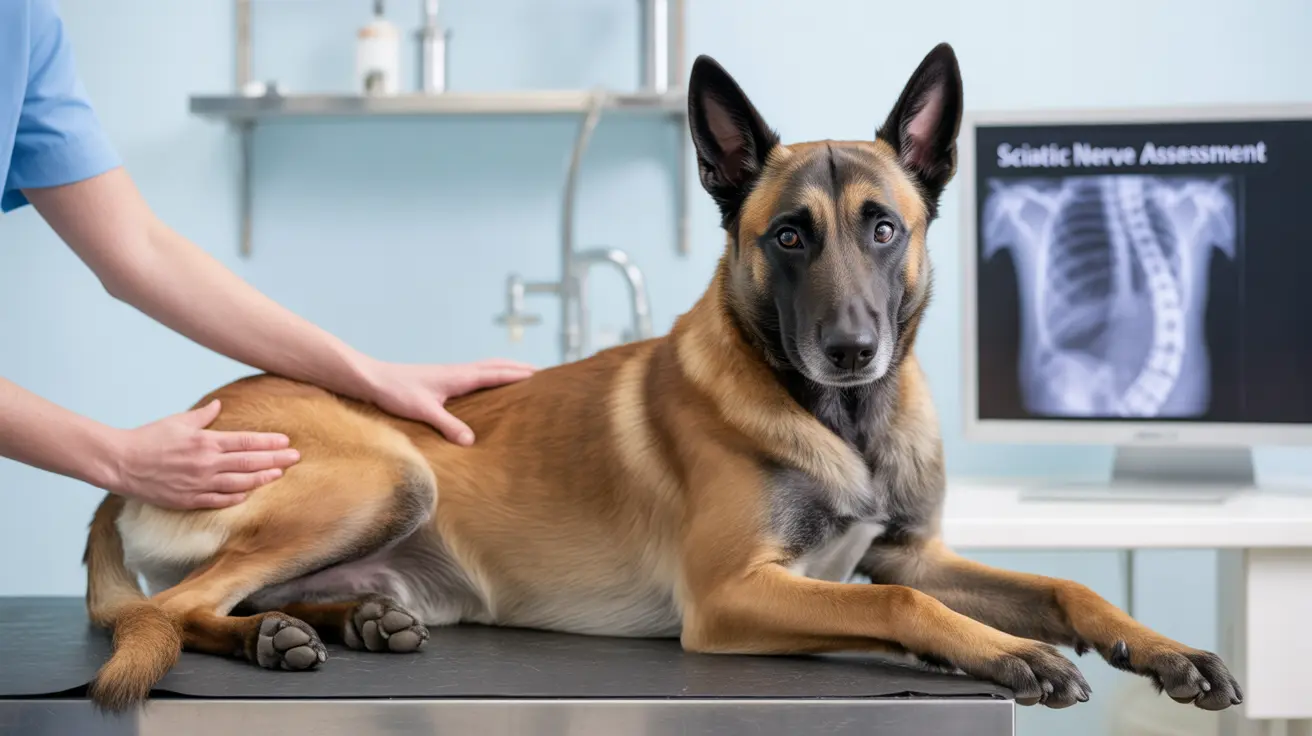When your dog experiences a sciatic nerve injury, it can be a concerning and complex condition that affects their mobility and quality of life. The sciatic nerve, a crucial component of your dog's nervous system, controls movement and sensation in the hind legs. Understanding this condition is essential for early detection and proper treatment.
In this comprehensive guide, we'll explore everything you need to know about sciatic nerve injuries in dogs, from recognizing early warning signs to understanding treatment options and recovery expectations.
What is Sciatic Nerve Injury in Dogs?
The sciatic nerve is the largest nerve in your dog's body, running from the lower back through the hips and down each hind leg. When this nerve becomes damaged, it can cause various symptoms ranging from mild discomfort to severe mobility issues.
- Traumatic injuries or accidents
- Surgical complications
- Bite wounds
- Tumors or masses
- Herniated discs
- Injection site reactions
Recognizing the Signs of Sciatic Nerve Damage
Early detection is crucial for successful treatment. Watch for these common symptoms:
- Limping or dragging of the affected hind leg
- Muscle weakness or atrophy
- Difficulty standing or walking
- Reduced movement in the hip, knee, or ankle
- Abnormal positioning of the paw
- Signs of pain when touching the affected area
- Loss of muscle mass in the affected leg
Diagnosis and Assessment
Veterinarians use several methods to diagnose sciatic nerve injury:
- Physical examination
- Neurological assessment
- Diagnostic imaging (MRI, X-rays, ultrasound)
- Electrodiagnostic testing
- Gait analysis
Treatment Options and Recovery
Treatment plans are tailored to the severity and cause of the injury. Common approaches include:
Conservative Management
- Rest and restricted activity
- Pain management medications
- Anti-inflammatory drugs
- Physical therapy exercises
- Massage therapy
Advanced Treatment Options
- Surgical intervention when necessary
- Rehabilitation therapy
- Hydrotherapy
- Acupuncture
- Laser therapy
Supporting Your Dog's Recovery
Recovery from sciatic nerve injury requires patience and dedication. Create a supportive environment by:
- Providing comfortable bedding
- Using non-slip mats on floors
- Assisting with mobility when needed
- Following prescribed exercise routines
- Maintaining a healthy weight
- Regular veterinary check-ups
Frequently Asked Questions
What are the common signs of sciatic nerve injury in dogs and how can I recognize them early?
Early signs include limping, dragging the affected leg, muscle weakness, and showing pain when the area is touched. You may also notice your dog having difficulty getting up or maintaining balance. Early recognition and veterinary consultation are crucial for better outcomes.
How is sciatic nerve damage diagnosed in dogs, and what role do MRI and ultrasound play in the process?
Diagnosis typically involves a physical examination, neurological assessment, and imaging tests. MRI provides detailed images of the nerve and surrounding tissues, while ultrasound offers real-time visualization and is particularly useful for guided procedures. These tools help determine the location and extent of nerve damage.
What treatment options are available for dogs with sciatic nerve injury, and how effective are physical therapy and surgery?
Treatment options range from conservative management (rest, medications, physical therapy) to surgical intervention. Physical therapy can be highly effective for mild to moderate cases, while surgery may be necessary for severe injuries or when conservative treatment fails. Success rates vary depending on the injury's severity and timing of treatment.
How long does it typically take for a dog to recover from different types of sciatic nerve injuries?
Recovery time varies significantly. Mild injuries may improve within weeks, while severe cases can take months or even up to a year for maximum recovery. Some dogs may have permanent deficits, especially if treatment is delayed or the injury is severe.
What can I do at home to support my dog's recovery and prevent complications after a sciatic nerve injury?
At home care includes providing a safe environment with non-slip surfaces, assisting with mobility, following prescribed exercise routines, and maintaining a consistent rehabilitation schedule. Regular monitoring and communication with your veterinarian are essential for optimal recovery.
Conclusion
While sciatic nerve injury in dogs can be challenging to manage, understanding the condition and working closely with your veterinary team can lead to the best possible outcomes. Early detection, proper diagnosis, and consistent treatment are key factors in your dog's recovery journey.






